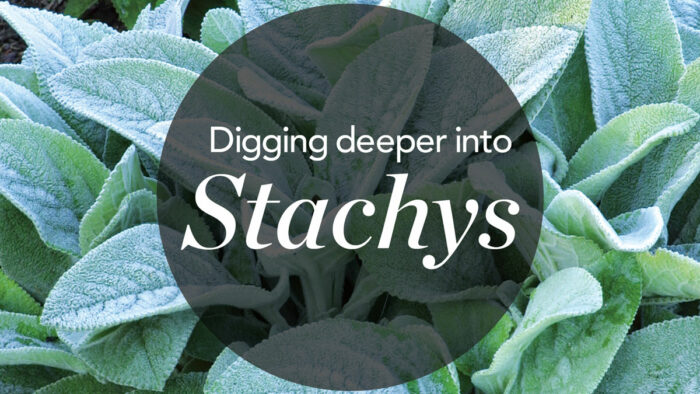
In a world where I could only have 10 plants in my garden—clutch your pearls, right?—lambs’ ears (Stachys byzantina and cvs., Zones 4–8) would most assuredly be one of them. I have been a fan of the cultivar ‘Big Ears’ for what seems like forever, and I have grown it in my own garden for almost as long. I like the playfulness of the fuzzy leaves—so much like a lamb’s cuddly ears. Their silvery complexion complements colorful perennials, and the bold foliage is sublime with fine-textured grasses. At some point, lambs’ ears went from a novelty to a garden standard in my eyes, but my appreciation of its soft wooliness has never wavered. The rambling habit makes lambs’ ears a good ground cover, but I think this plant is best—as a lone plant or massed—spilling onto a walk or terrace, where the velvety leaves blur the hard edges.
My awareness of betonies (S. officinalis and cvs., and S. macrantha and cvs.) developed quickly after my first sighting of wood betony in an exceptional local garden. Spikes of glowing purple flowers rose above lush verdant mounds as an exclamation point in that blousy English-style border. It struck me as an uncommon stand-in for the verticality of commonplace perennials such as veronica (Veronica spp. and cvs., Zones 4–8) and woodland salvia (Salvia nemorosa and cvs., Zones 3–9). I spent the rest of that summer amassing a trial to learn more about the diversity of Stachys and to discover why betonies weren’t more available.
Trial Parameters
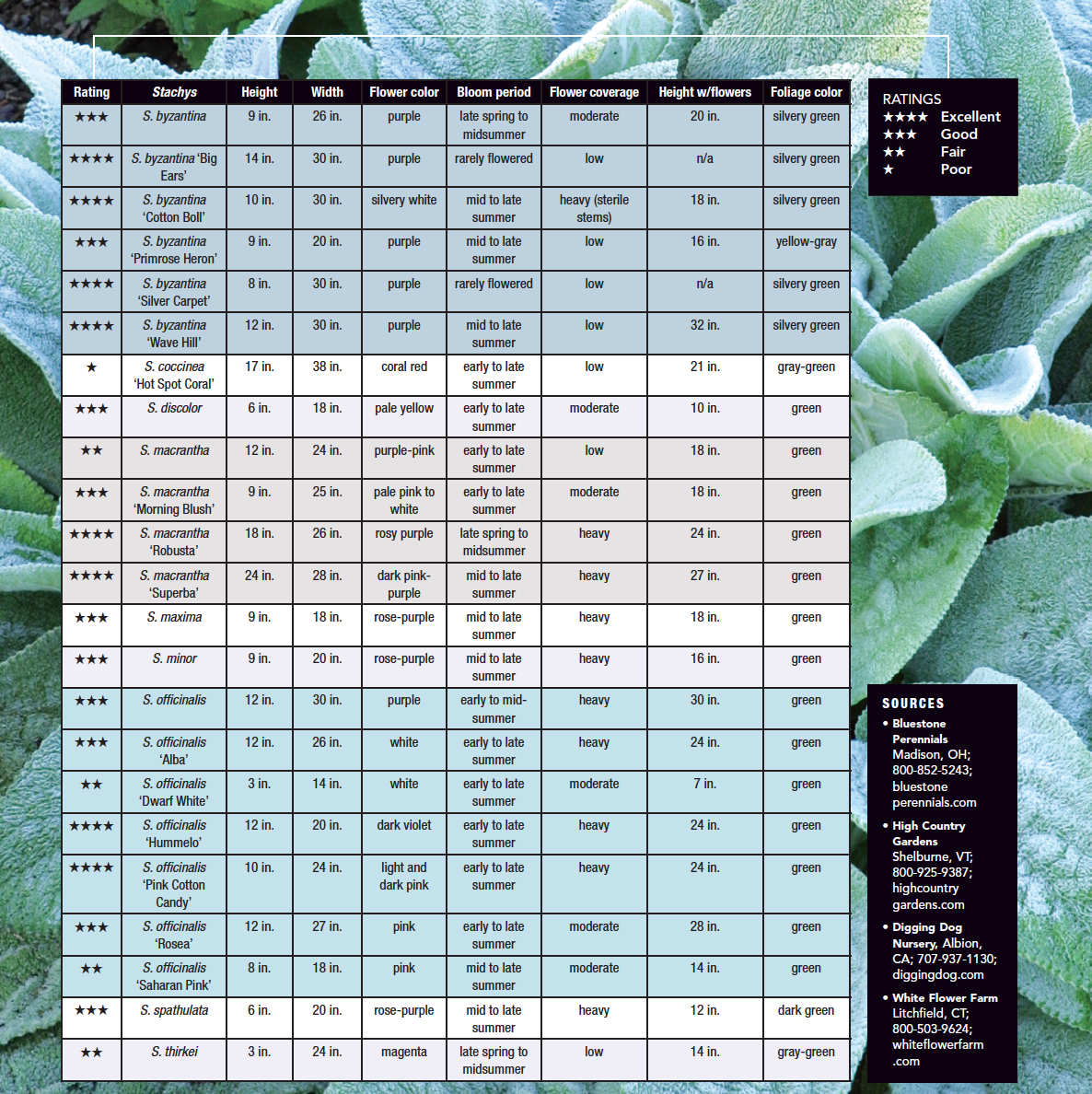
Since 1998, the Chicago Botanic Garden has evaluated 29 different lambs’ ears and betonies in our comparative trials.
How long: Minimum four years
Zone: 5b
Conditions: Full sun; well-drained, alkaline, clay-loam soil
Care: We provided minimal care, allowing the plants to thrive or fail under natural conditions. Besides observing ornamental traits, we monitored the plants to see how well they grew and adapted to environmental and soil conditions. We also kept a close eye on any disease or pest problems and assessed plant injuries or losses over winter.
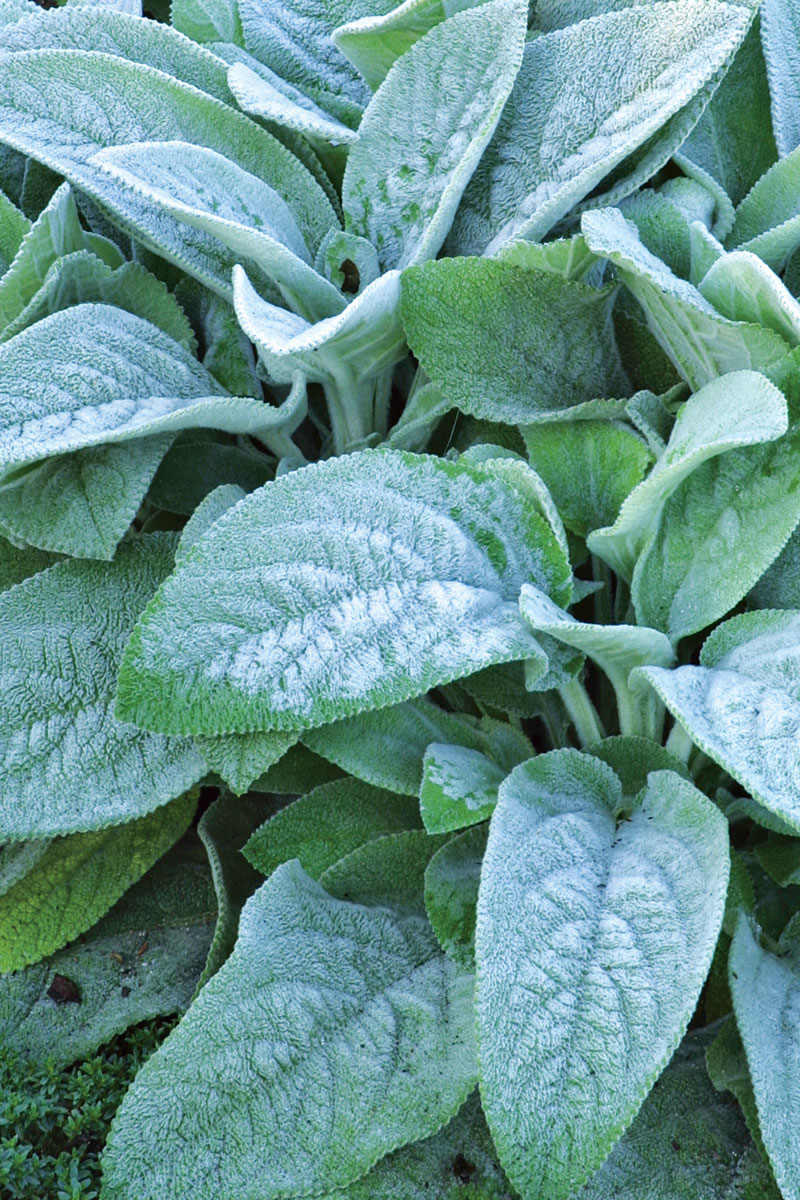
The pale silvery green leaves of ‘Big Ears’ (S. byzantina ‘Big Ears’) are larger than those of other lambs’ ears, and this plant rarely flowers; despite it’s being touted as nonflowering, we saw a stem or two each year. A lack of flowers may not seem like a plus, but in the case of lambs’ ears, it can be. The fuzzy calyces hide the small purple flowers, so the show is more about the texture of the floral stems. The downside is that flowering saps energy, which causes a decline in plant health and a tatty appearance later in the season. ‘Big Ears’ is a robust spreader and is considered more tolerant of heat and humidity. In the garden world, ‘Countess von Zeppelin’ and ‘Helene von Stein’ often masquerade as ‘Big Ears’. I cannot say every plant for sale is the same, but the names generally all refer to the same big-leaved plant.
Tip: Be wary of the nomenclature
- With leaves alone, the relation of lambs’ ears to betonies is confounding, and it appears that taxonomists agree. Big betony (Stachys macrantha) and wood betony (S. officinalis) have been rechristened Betonica macrantha and B. officinalis, respectively. These name changes have not caught on widely, though, so I’m sticking with the old names for now.
- There are some additional Stachys nomenclatural issues: S. maxima and S. minor are dubious names despite their widespread commercial use. S. monieri—usually associated with ‘Hummelo’—is an invalid name and a synonym of S. officinalis. Likewise, the dwarf betony formerly known as S. minima is now S. spathulata. All this is to say that it can be hard to find the plant you’re looking for unless you know its multiple labels.
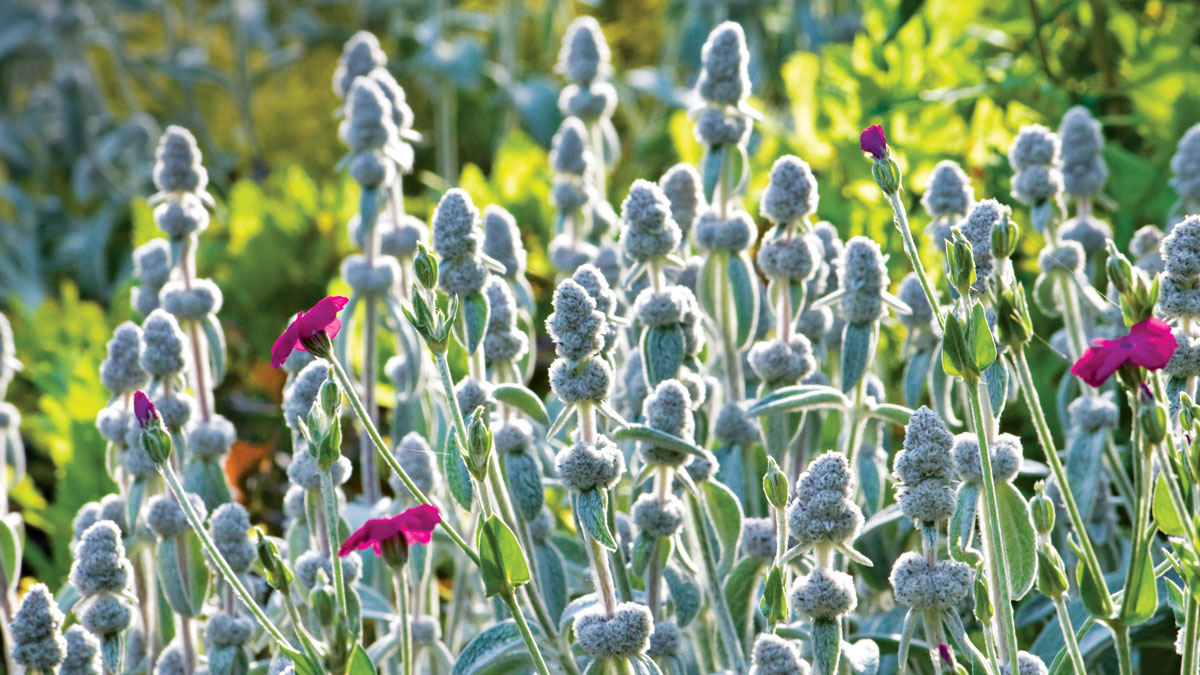
‘Cotton Boll’ (S. byzantina ‘Cotton Boll’), on the other hand, pushes up an abundance of stems without flowers because it is a sterile selection. Its unique look and name come from the vibrant silver-white fuzzy balls that appear in tiers along the stems in early summer. The head-to-toe fuzziness of ‘Cotton Boll’ is a textural treat, while both hot- and cool-colored flowers enhance its bright silvery stems and leaves. ‘Cotton Boll’ is 10 inches tall—to 18 inches with floral stems—and 30 inches wide. The flower stems start out upright but tend to flop later. Removing the stems is not necessary to maintain health and vigor, but the plants will look tidier.
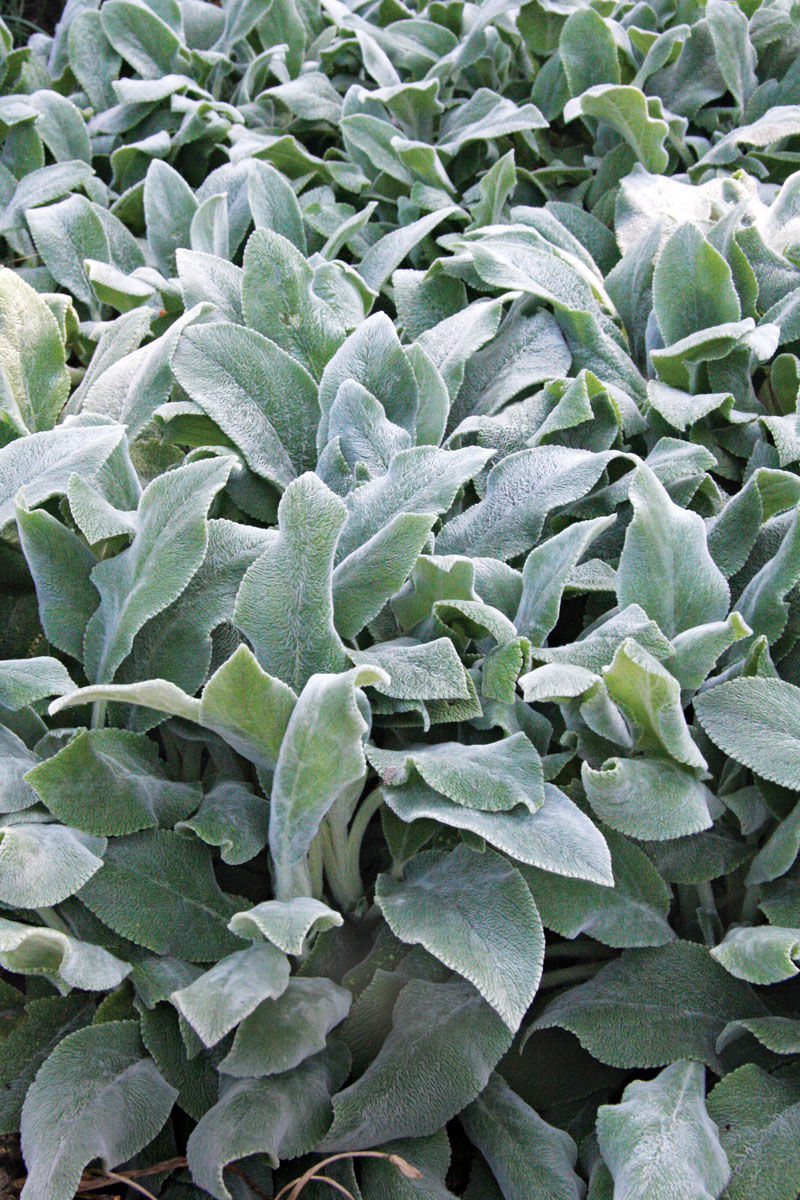
The shorter and narrower leaves of ‘Silver Carpet’ (S. byzantina ‘Silver Carpet’) are the same silvery green as those of the species, though the smaller leaves seem woolier than other lambs’ ears to me. While this cultivar is considered nonflowering, an occasional floral stem may pop up. These erratic stems don’t add anything to the show, so a quick snip takes care of that. ‘Silver Carpet’ is the lambs’ ears that I see most commonly used as a ground cover. The dense, mat-forming habit has a clean look, allowing it to settle in nicely at the front of a bed or border.
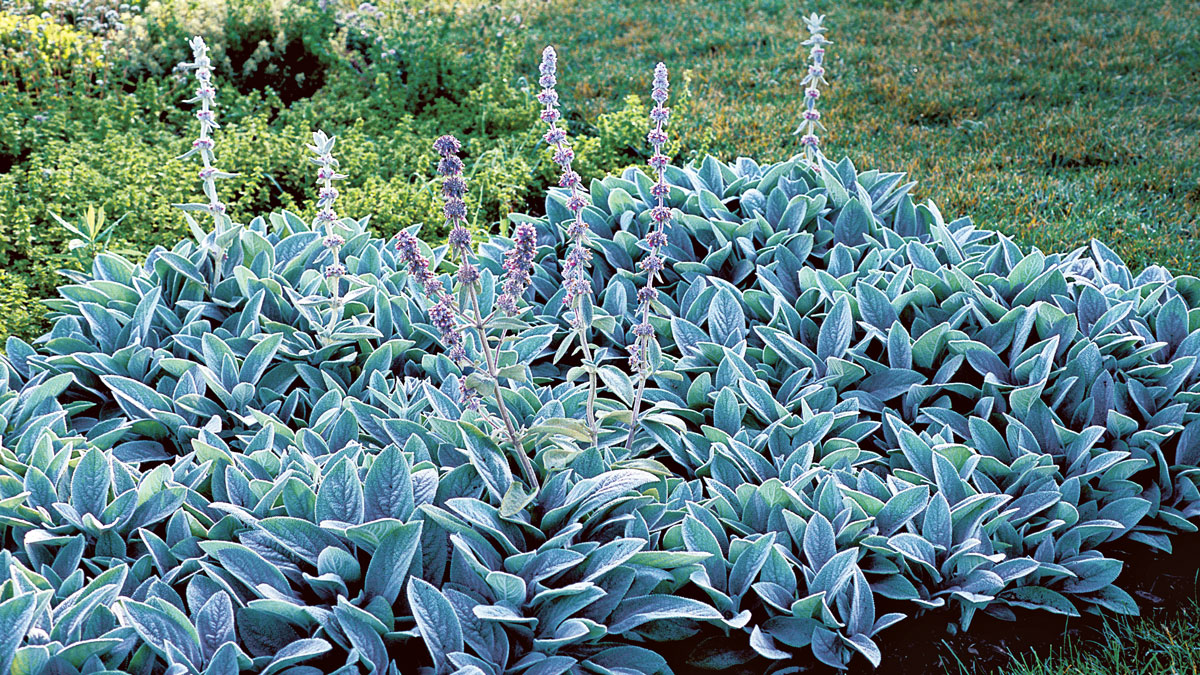
‘Wave Hill’ (S. byzantina ‘Wave Hill’) is essentially a flowering version of ‘Big Ears’, so naturally I am predisposed to like it. The similarity of the two in leaf and habit is unquestionable, but ‘Wave Hill’ consistently produces flowers each year. At 32 inches, its flower stems were the tallest of the lambs’ ears, and the half-inch blossoms were twice as long as those of ‘Primrose Heron’. Enjoy the modest floral show, but be quick to remove the spent stems before seeds ripen and things turn ugly. The large, silvery green leaves form a fat mound.
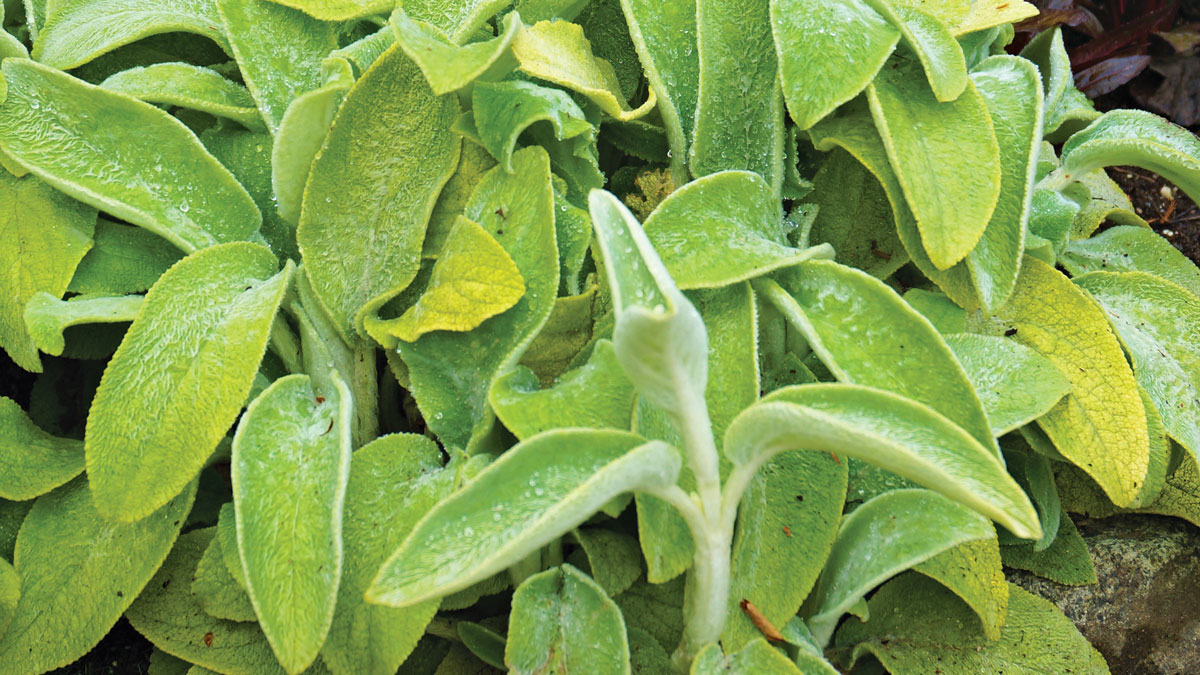
Paradoxically, it is not that I liked ‘Primrose Heron’ (S. byzantina ‘Primrose Heron’) more or less than other lambs’ ears; it’s that I liked it at all. At first, I was dubious of the yellow-gray leaves—they looked a bit sickly—but by the third spring, their soft glow won me over. The early chartreuse to occasionally acid yellow color gradually fades to gray-green, although some yellow may appear again in fall. ‘Primrose Heron’ just missed a top score because of low flower production, which, ironically, is what I consider the least important attribute of lambs’ ears. Unfortunately, it also lacks the vigor of other cultivars and seems to struggle more after winter.
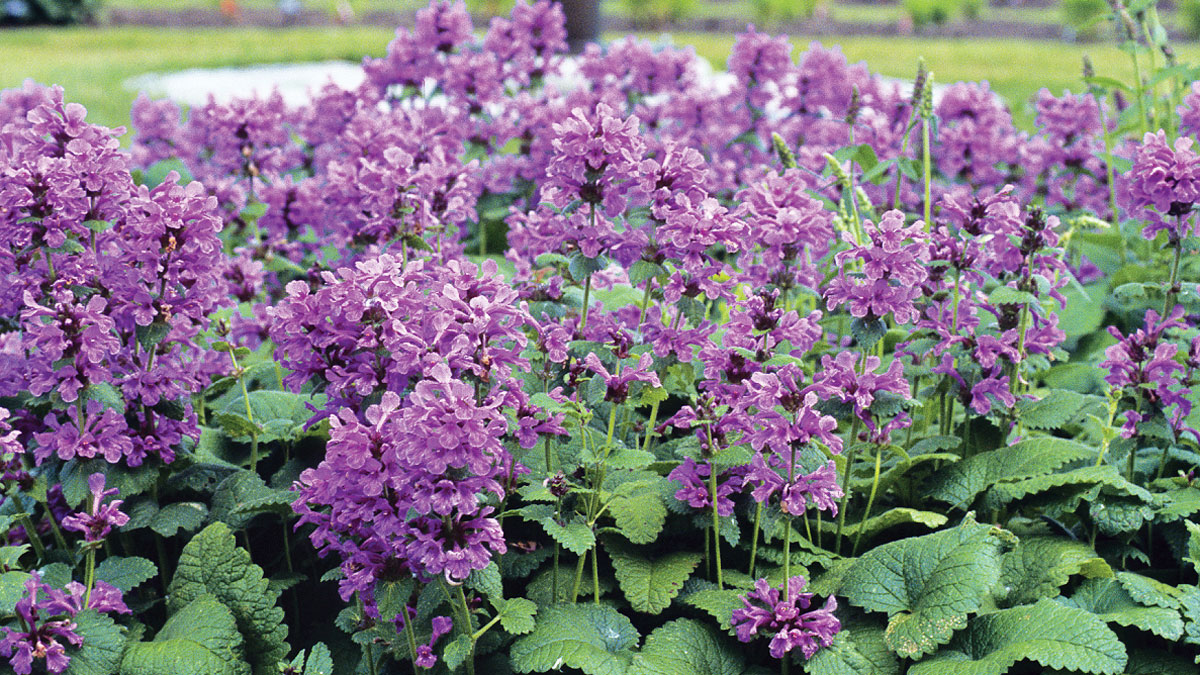
‘Robusta’ big betony (S. macrantha ‘Robusta’) was a solid performer from the first spring to the last. Unlike lambs’ ears, betonies are flowering plants first, although there is nothing shabby about the foliar show on its own; they are also clumpers rather than spreaders. The 1-inch-long, vibrant, rosy purple flowers are larger than most and are clustered in terminal spikes from late spring to midsummer. Peak bloom is about two weeks after floral budburst. In full sun, the flowers are tightly bunched in whorls at the ends of upright stems; the whorls are looser in partial shade.
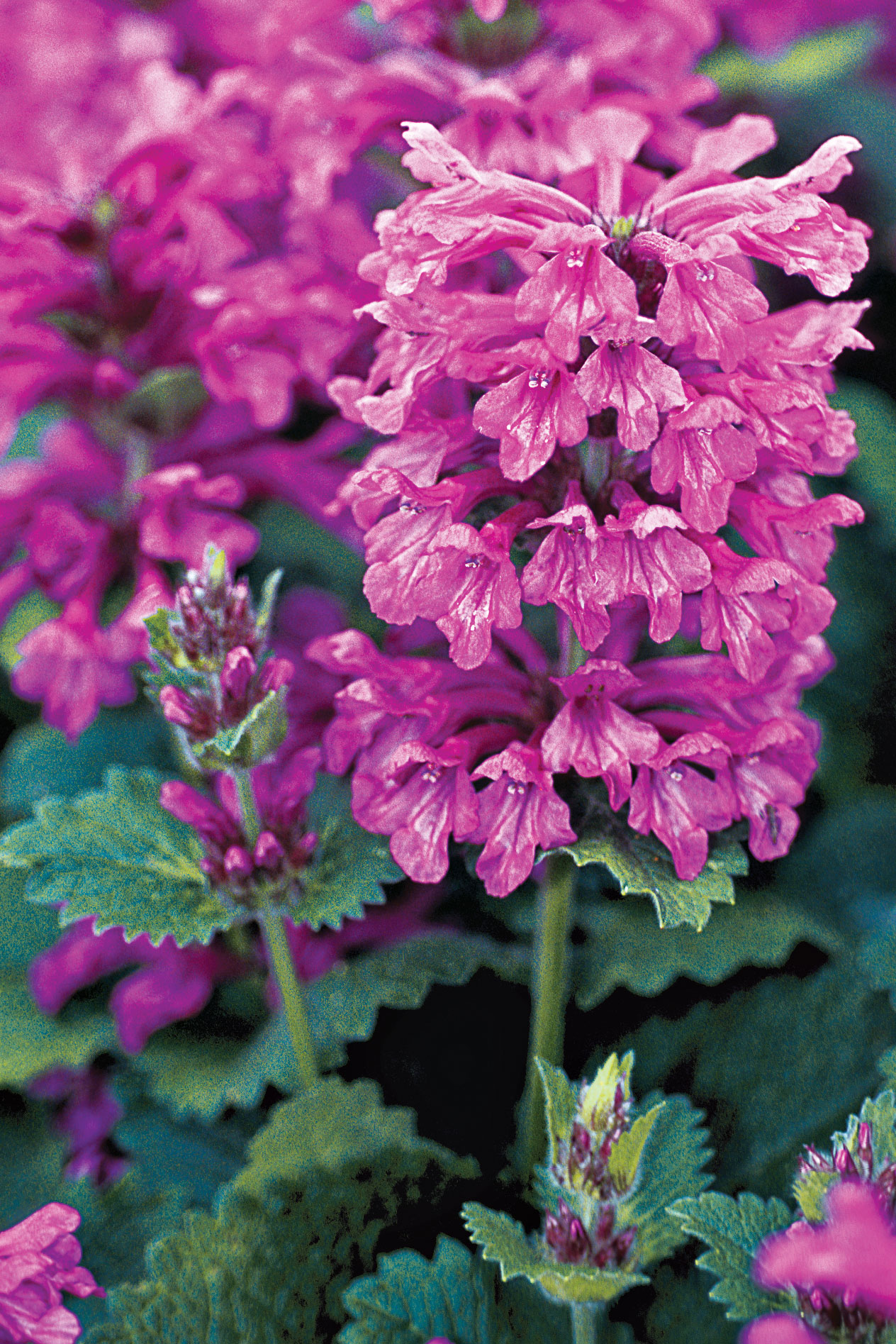
The resemblance of ‘Robusta’ to ‘Superba’ big betony (S. macrantha ‘Superba’) is clear, so much so that I tell gardeners to consider them interchangeable and to buy whichever is easiest to find. That said, ‘Superba’ has dark pink-purple flowers and is slightly larger. It also blooms about two weeks later than ‘Robusta’. The broad, nearly heart-shaped leaves stay healthy from spring to fall. Given their close likeness to each other, I cannot really explain why I favor ‘Robusta’ over ‘Superba’. I would be happy with either one in my garden.

‘Hummelo’ wood betony (S. officinalis ‘Hummelo’) might be the best thing that ever happened to betonies, because its popularity increased gardeners’ awareness of other ones. As a plant, ‘Hummelo’ looks much like any wood betony; however, the half-inch flowers are a distinctive dark violet. From early to midsummer, compact flower heads—3 inches long—are held on arrow-straight stems to 24 inches tall. ‘Hummelo’ has narrower green leaves than big betony but shares the same wrinkled surface and scalloped margins. ‘Hummelo’ was named after Piet Oudolf’s garden/nursery—but, interestingly, Hummel is German for “bumblebee” and could be taken as a nod to this plant’s bee-friendly nature. All betonies and lambs’ ears are great pollinator plants. After years of delighting gardeners, ‘Hummelo’ was named the 2019 Perennial Plant of the Year—a well-deserved accolade.
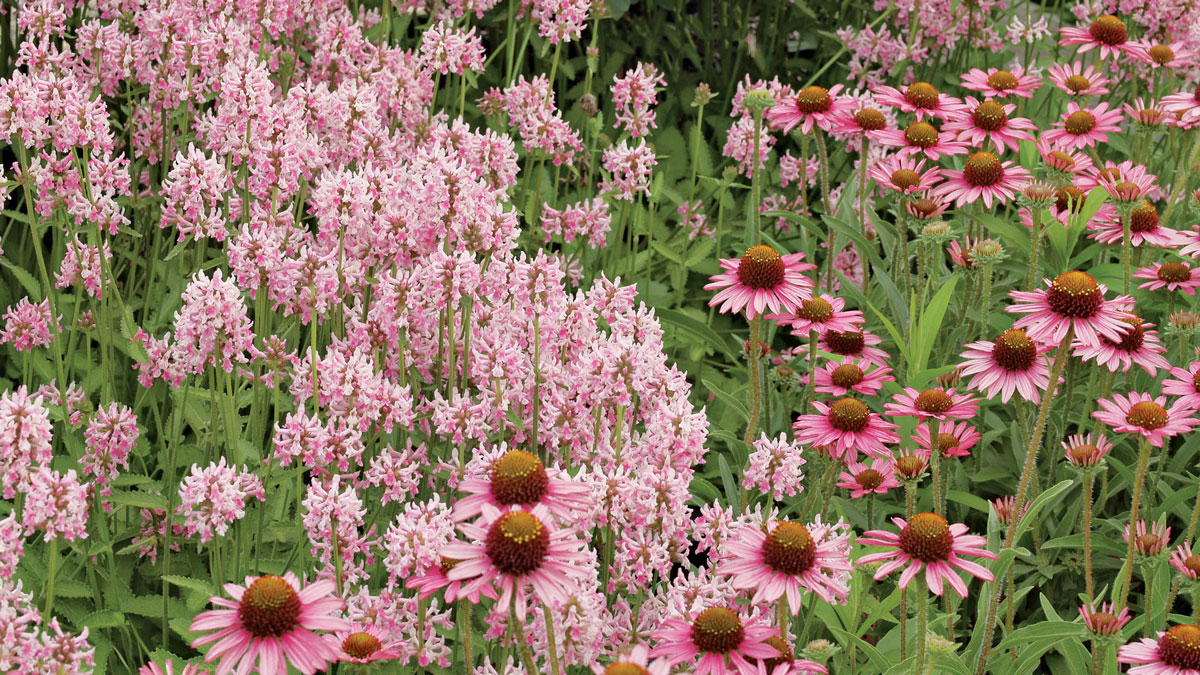
‘Pink Cotton Candy’ wood betony (S.officinalis ‘Pink Cotton Candy’) is a seedling discovered in our trials—one positive argument for not deadheading! We quickly recognized its unique bicolored pink flowers and exceptional plant vigor. Each flower is light and dark pink, and both colors fade to lighter versions as they age, which creates a multicolored floral show from early to late summer. The half-inch flowers are clustered in 4-inch spikes atop 24-inch-tall stems; without flowers the plant is compact. Although some gardeners have reported lax to floppy stems, we observed a strictly upright habit in our full-sun garden. The monochromatic pairing of ‘Pink Cotton Candy’ with short coneflowers is delightful. Pixie Meadowbrite® (Echinacea ‘CBG Cone 2’, Zones 4–9), for example, is a perfect companion.
New kids worthy of a second look
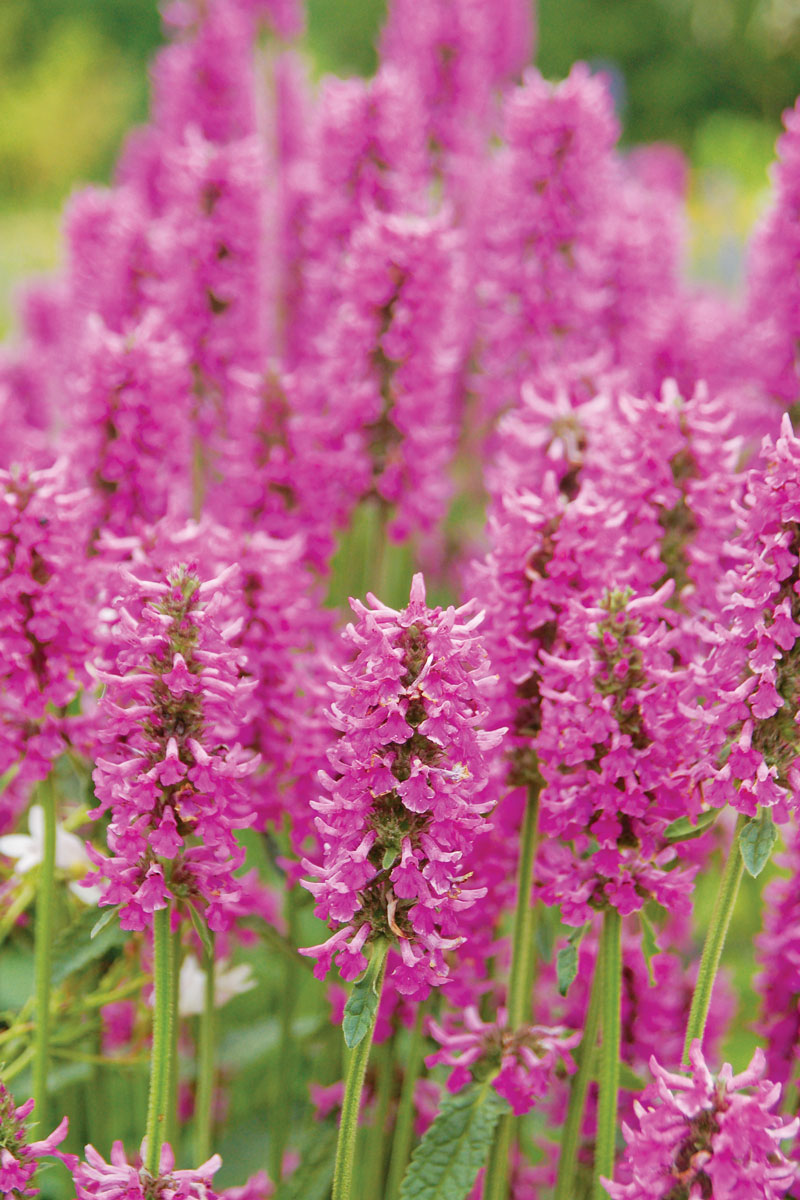
My first impressions of a plant are not always lasting ones, but ‘Summer Romance’ betony (S. ‘Summer Romance’) captivated me from its early days in the trials. The bright pink-purple flowers, in nearly 4-inch-long clusters, peak for a couple of weeks in early summer before dwindling down by midsummer. ‘Summer Romance’ has a bushy habit, 32 to 36 inches tall and 24 inches wide, with rigid purple flower stems that rise above mounds of healthy green leaves. The comparison to ‘Hummelo’ is an easy one to make because they have a similar look, but I think ‘Summer Romance’ has a robustness of habit and flower that surpasses its predecessor.
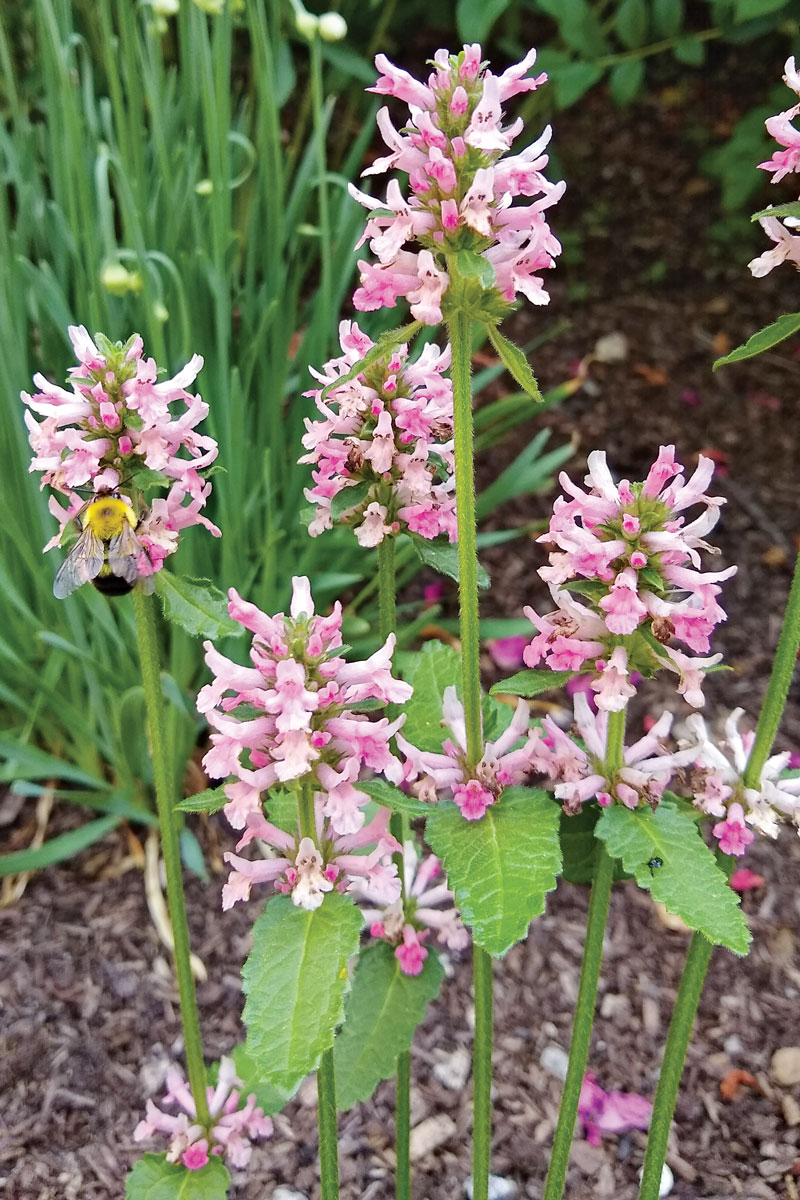
The flowers of ‘Summer Crush’ betony (S. ‘Summer Crush’) create a mellower confection than those of the vibrant ‘Summer Romance’. Both cultivars come from the hand of plantsman Brent Horvath, who has introduced many impressive perennials over the years. The small flowers open pink and age to soft pink and white—a pretty flower show in the vein of ‘Pink Cotton Candy’. Dense flower spikes, to 3 inches long, perch on strong stems from early to midsummer. ‘Summer Crush’ reached 34 inches tall and 28 inches wide in just two years.
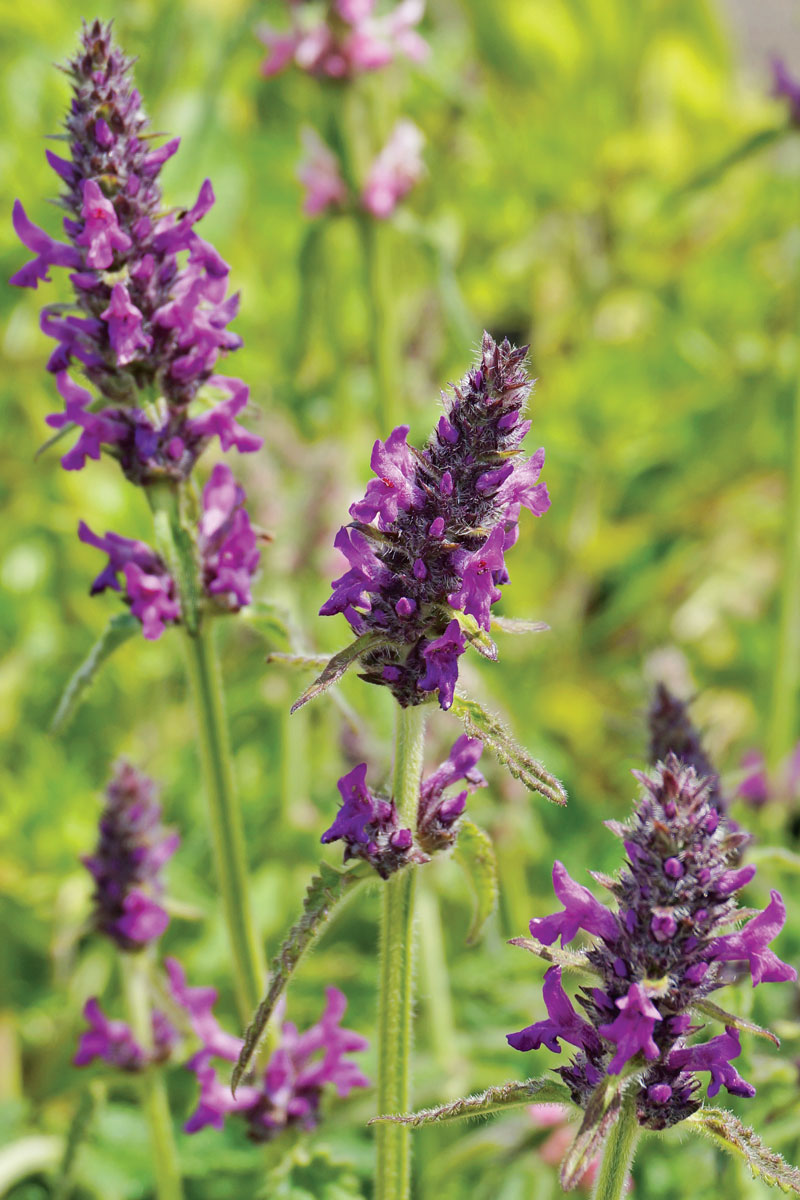
Dwarf wood betony (S. officinalis ‘Densiflorus’) is diminutive in all ways to larger betonies but does not skimp on charm. The glossy dark green leaves are about 2 inches long and just over a half-inch wide, and they have dainty scalloped margins. Rosy purple flowers, crowded in short spikes, bloom from early to midsummer. Dwarf wood betony’s compact stature, just 10 inches tall and 12 inches wide, is helpful in smaller spaces where the size and vigor of bigger betonies would not work. I am picturing this pint-size beauty in my trough garden, and resisting calling it “cute” is hard.
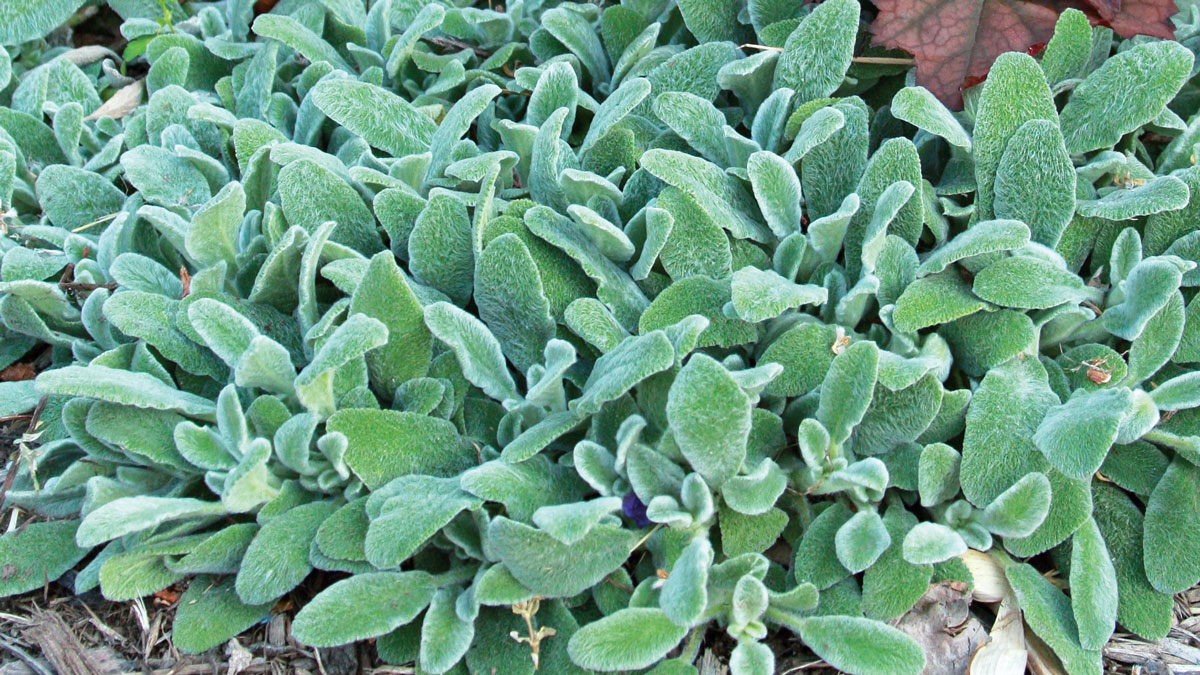
A number of lambs’ ears continually eluded my trial due to lack of availability, so I was pleased to find ‘Silky Fleece’ (S. byzantina ‘Silky Fleece’), a cleverly named newer introduction. The small velvety leaves are pale silvery green and form compact rosettes up to 10 inches wide. Although I’m thoroughly satisfied with the leaves of ‘Silky Fleece’ on their own, the spikes of plum-colored flowers on 10-inch-tall stems are a sweet touch in midsummer. The silky cushions stay attractive and healthy if stems are removed promptly as flowers fade.
Basics
What’s the difference? Lambs’ ears vs. betony
The three main members of the genus Stachys are fairly easy to identify if you focus on their foliar traits.
Lambs’ earsS. byzantina and cvs.
|
Big betonyS. macrantha and cvs.
|
Wood betonyS. officinalis and cvs.
|
Richard Hawke is plant evaluation manager at the Chicago Botanic Garden in Glencoe, Illinois.
Sources
- Bluestone Perennials Madison, OH; 800-852-5243; bluestone perennials.com
- High Country Gardens Shelburne, VT; 800-925-9387; highcountrygardens.com
- Digging Dog Nursery, Albion, CA; 707-937-1130; diggingdog.com
- White Flower Farm, Litchfield, CT; 800-503-9624;
Fine Gardening Recommended Products

A.M. Leonard Deluxe Soil Knife & Leather Sheath Combo
Fine Gardening receives a commission for items purchased through links on this site, including Amazon Associates and other affiliate advertising programs.

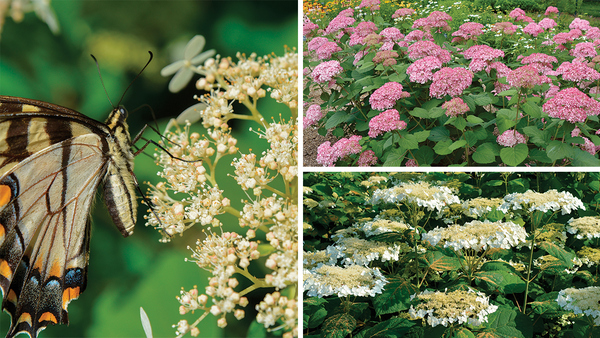
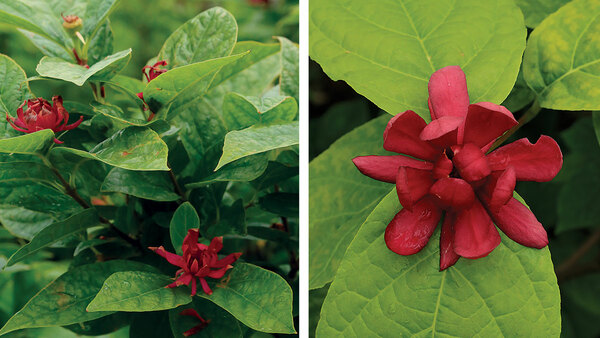
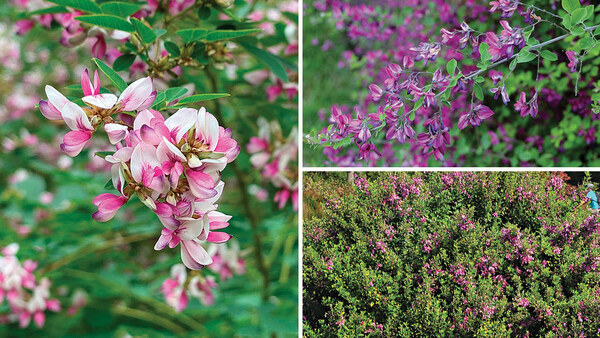














Comments
I amgoing to try wordle unlimited and save seeds of the Stachys, lambs ears, good for bees and lovely and furry.
Log in or create an account to post a comment.
Sign up Log in